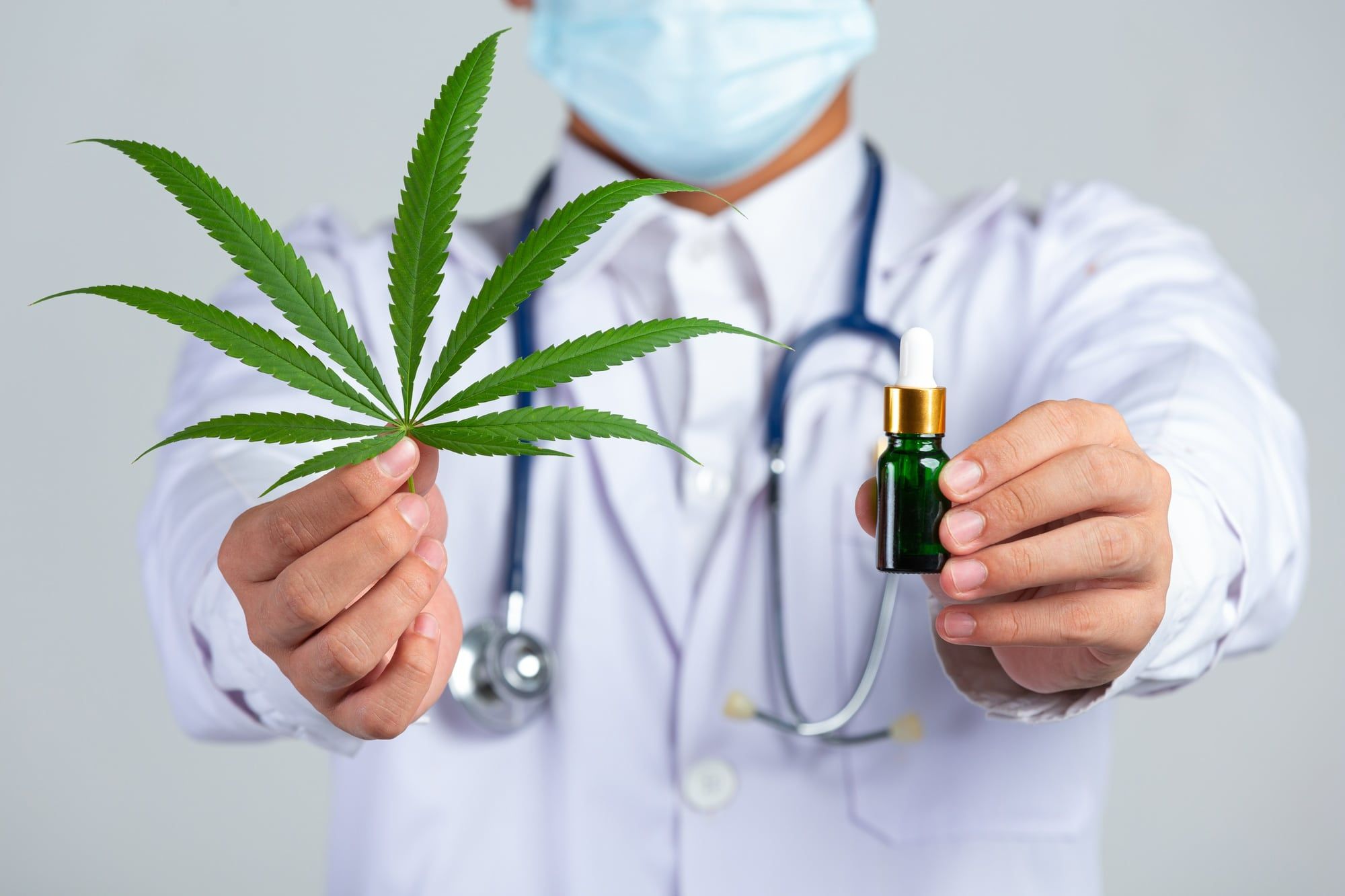Medical Marijuanas Statistics
by Haley Mills · September 26, 2022
Medical marijuana is a hot topic with a lot of debate surrounding it. Get the facts with our medical marijuana statistics page.

Medical marijuana is becoming increasingly legal in the states, despite the ongoing federal prohibition. Many states share similar qualifying medical conditions, and cannabis research continues into the plant’s medicinal potential.
New data supports medical cannabis users, and the industry is growing at an exponential rate. Continue reading as we provide key findings and statistics regarding medical marijuana use in the United States.
Medical Marijuana 101
Marijuana is a drug that has been used for centuries. The first recorded use of marijuana as medication was in 2737 BC by Chinese Emperor Shen Nung. Marijuana was also used as an anesthetic during surgery in Europe and the United States during the 1800s and early 1900s.
Today marijuana is sold as a pain reliever and an alternative to dangerous prescription medications like opioids. Marijuana has been used in various medical conditions, including cancer, glaucoma, HIV/AIDS, chronic pain, and muscle spasms. Marijuana is also effective in treating symptoms caused by chemotherapy and radiation therapy.
Marijuana has many potential medical uses for several qualifying conditions, including:
- It effectively reduces chronic pain, nausea, and vomiting associated with cancer and other illnesses.
- It may also be used to manage mental illnesses such as PTSD, schizophrenia, and bipolar disorder.
- Marijuana has also been shown to reduce intraocular pressure in the eyes of people with glaucoma. It may cause the pupil to constrict, reducing the stress inside the eye.
- Seizure management, particularly from epilepsy.
- Diseases such as Crohn’s disease, HIV/Aids, Multiple sclerosis, and Alzheimer’s.
In the United States, marijuana is most commonly used for recreational purposes. People enjoy smoking or ingesting marijuana for its psychoactive effects, including euphoria and a sense of relaxation. However, marijuana use for medicinal purposes is quickly catching up.
The use of marijuana as a health care option is still widely debated, with some states legalizing it for medical purposes only for qualifying patients. In contrast, others restrict all use as a comprehensive drug abuse prevention method.
Current Cannabis Research
U.S. Legality Statistics
- As of 2022, thirty-eight states have legalized medical marijuana, while nineteen states have legalized weed for full adult use.
- According to August 2021 data:
- 49% of Americans have tried marijuana, up from 45% in 2017 and 2019
- 12% of the U.S. general public say that they smoke the plant (marijuana)
- Smoking weed is most common among younger adults and college students
- According to a recent Pew Research Center online survey, many adults in the United States support some extent of cannabis legalization. However, American adults’ religious affiliation and level of religious commitment impact the circumstances in which they think others should use marijuana.
- Here are the statistics:
- Among those who identify with any religious group, 54 percent believe marijuana should be legal for medical and recreational use.
- Thirty-five percent say it should only be legal for medical use.
- Among unaffiliated people (atheist, agnostic, or none), approximately 76 percent say marijuana should be legal for recreational and medicinal purposes.
- 91 percent of adults surveyed concluded that marijuana should be legal in some ways, including 69 percent who say it should be legal for medical and recreational use and approximately 31 percent who say it should be legal for medical use only.
Industry and Workforce Stats
- Secure funding is a loan in which cannabis companies offer up an asset for collateral against the loan. Around 700 of the 12,000 U.S. banks provide banking services to cannabis businesses.
- As of 2021, there were 428,059 people employed with cannabis jobs. This was a significant jump up from prior years.
- A 2020 study showed that women held nearly 30 percent of executive-level positions within the cannabis industry.
- A recent survey conducted by the Current Consulting Group (CCG) found that twenty-one percent of employers reported a decline of at least 61 percent in the number of drug tests that they perform on employees since the pandemic.
- These statistics are based on the 2019 Drug Testing Index report by Quest Diagnostics which has analyzed over ten million workplace drug tests over the span of thirty years.
- The urine drug test positivity rate among the non-safety-sensitive workforce in the U.S. is at 4.5 percent which is the highest level since 2004. This number is 25 percent higher than the lowest recorded rate of 3.5 percent in 2010 and 2012.
- Marijuana is the most commonly detected drug among all of the workforces including safety-sensitive.
- Opiate testing positivity decreased by 37 percent to its lowest level in 4 years to .31 percent. Opioid testing positivity has also reduced by 46 percent to its lowest level in five years to .43 percent.
- The United States general workforce positivity rate increased from 4.8 percent in 2015 to 5.1 percent in 2018.
- Six industry sectors had double-digit increases between 2015 and 2018 in drug testing positivity rates that doubled the national positivity rate increase of 6.2 percent.
- Eight industry sectors saw substantial increases in marijuana positivity rates between 2015 through 2018 compared to the national average of 16.7 percent.
- The Information Services industry saw a significant decrease in marijuana positivity rates with a 12.5% decrease between 2015 and 2018 and was the only industry sector with a decrease between 2017 and 2018.
- More than one-third of programmers admit to cannabis use during work hours to boost creativity, work performance, and enjoyment, according to a recent study by the University of Michigan, published by Cornell University, in January.
- The study also showed that cannabis use is similar during work tasks for programming employees, managers, and students.
- A study conducted by SHRM and commissioned by the Drug and Alcohol Testing Association examined businesses’ use of drug testing programs. Poll results indicate that 57 percent of employers conduct drug tests on all job candidates. Of that number, 69 percent of employers who use drug tests on job candidates have done so for at least seven years.
- According to a recent study supervised by staffing firm ManpowerGroup, Vice recently reported that nine percent of over 45,000 employers worldwide had eliminated job screenings or drug tests as an incentive to hire talent.
Medical Use Fast Facts
- According to a study from 2008, ingesting marijuana strains with high THC levels can reduce the amount of REM sleep you get.
- A recent study reported that cannabis shortens the time it takes to fall asleep, both for sleep problems and for cannabis users who fall asleep without trouble.
- Some studies suggest a distinct link between those who use cannabis daily and less frequent users in how marijuana use affects their sleep patterns.
- Per the National Cancer Institute, cannabinoids may provide assistance to cancer patients with the treatment of cancer-related side effects.
- Anecdotal evidence suggests that microdosing cannabis is helpful for its ability to stimulate certain parts of your brain, like your amygdala which is responsible for emotional response.
- Cannabis has served as an entheogen for physical and spiritual healing dating back approximately as far back as 2000 BC. Spain introduced weed to the New World in the 1500s.
- In these five states, patients with generalized social anxiety disorders qualify for a medical marijuana card with a prescription from a licensed physician.
- Pennsylvania
- New Jersey
- Florida
- North Dakota
- California
- Nearly one-half of those diagnosed with depression are also diagnosed with an anxiety disorder. This can lead to substance abuse disorders in severe cases without proper treatment. Some marijuana strains may be helpful as an alternative therapy for social anxiety.
- Collectively, the state of Arizona made over a billion dollars in marijuana sales, both medical and recreational, in the first eleven months of 2021. Of that number, medical sales led from February to October, but recreational sales quickly caught up in November.
- For the full year of 2021, over 700 million of those dollars came directly from medical marijuana purchases. The most money earned in one month last year for medicinal weed was 73 million in March and April.
Recreational Use Statistics
- A recent report by MJBizDaily suggests that the total U.S. economic impact from recreational marijuana sales in 2021 reached 92 billion USD, and the cannabis industry is projected to earn approximately 160 billion USD by 2025.
- According to market research, the global legal marijuana market size was valued at USD 9.1 billion in 2020 and is expected to expand at a compound annual growth rate (CAGR) of 26.7% from 2021 to 2028.
- In Alaska, fifty percent of adult-use cannabis sales revenue “is invested in the Recidivism Reduction Fund and supports reentry programs for currently and formerly incarcerated individuals.”
- Colorado public schools and children have significantly benefitted from a nearly 500 million USD investment in cannabis tax revenue.
- California has distributed more than 100 million USD to community groups and local nonprofit programs that benefit people adversely impacted by punitive drug laws.
- Illinois is dedicating a percentage of its tax revenue to mental health services and local organizations that uplift disadvantaged communities. Incidentally, the state’s 2021 cannabis tax revenue outpaced that of alcohol by 100 million USD.
- Washington State funnels more than half of every one billion USD in cannabis tax revenue into public health initiatives, including a fund that provides health insurance for low-income families.
- In Arizona, adult-use marijuana sales peaked in November 2021, earning close to sixty million that one month. After January 22, 2021, recreational cannabis access made over 500 million dollars in 2021.
Summary
Whether you’re looking at recreational or medical marijuana use, both industries are booming in states that have legalized one or both options. While we provided the most recent statistics for federal legality and the cannabis industry as a whole, things are changing often and quickly. Remember to contact Leafy DOC with medical marijuana concerns and visit our resources section any time for the latest on marijuana industry news.
Last Updated: August 8, 2024
Get Approved for Your Medical Marijuana Card in Minutes!

Get Your Medical Card
Connect with a licensed physician online in minutes

Like This Article?
Share with your friends
Table of Contents
Keep Reading
-
3 Steps to Obtain Your NYS Medical Marijuanas Card Easily
Learn how to easily obtain your NYS medical marijuanas card with our simplified guide.
-
5 People Who Should Use Cannabis-Infused Lip Balm
Discover the surprising benefits of cannabis-infused lip balm and why these 5 individuals should try it today! Don’t miss out on the soothing effects – click now to find out who should use cannabis lip balm and experience its incredible results for yourself!
-
Which Cannabinoids Will Help With Inflammation?
Are you looking for natural ways to reduce inflammation? Find out which cannabinoids can help with pain relief and how they can be used in your health plan.



